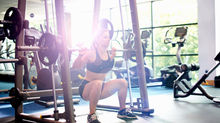How should I train for golf?
- Rachael Tibbs
- Feb 13, 2017
- 3 min read
Many people are now using the gym to help improve their golf game but are not always entirely sure what they should be focusing on.
“What are the specific golf muscles that I should be working?”
“Will loading my golf swing on a cable machine improve my clubhead speed?”
“Should I be doing lots of ‘core’ work?”
These are some of the most frequently asked questions from golfers who look to me for advice in the gym. There are problems that I find with these questions and the thinking that has led to them.
If we were to address them individually the first question comes from the notion that we should be isolating specific muscles and areas of the body. This concept generates really from the bodybuilding world where muscles are intentionally isolated so that they are worked harder and subsequently need to increase their mass to cope with the loads.
The golf swing is a highly complex sequence of movement that relies on multiple joints of the body working together to produce an efficient and consistent delivery of a golf club to a ball in a fraction of a second. We are all aware of the inconsistency in our games and the nasty shots that we sometimes produce when our ‘timing’ is a little off? We should be training the body to work as a unit and improve our abilities to control our body’s movement whilst creating and resisting forces that are generated in the golf swing.
Based on this I would always be looking to improve how a golfer moves initially and this forms part of my initial assessment with all my clients. If you cannot move safely and efficiently without any weight, then you are highly unlikely to move better with 30kg on your back. So get moving more, not just in the gym but at home or work.

We spend far too much time sitting down and when we do exercise we choose to sit down again on a spin bike; or run on a treadmill in a straight static line for 20 minutes. We are built to move in different planes and directions, not just in straight lines!
The next question again comes from the idea that to hit the ball further and create more power we should merely just be ‘loading’ the golf swing in the gym. Again, another fallacy which can end up doing much more harm than good to your game. Adding more load to the golf swing will alter how you move due to the increased weight. This can potentially change the mechanics of your swing and create the opposite of the desired effect and slow your swing down.
Yes, we do need to get stronger to increase our power and that means lifting a relatively heavy weight. This may initially be your bodyweight but as their becomes a need to progress and increase strength, additional weight would be needed to continue to develop. This load however should be added to full body, compound movements such as the squat or pull up; where the whole body is working to move, stabilise and generate forces – as we do in the golf swing. So ditch the bicep curls and tricep extensions.
Now when addressing the third question, many people struggle to understand the proper function of the core musculature. Firstly, to clarify the core consists of your abs, back, obliques, buttocks (glutes) and muscles of the hips. In golf the core should be developed to ensure a stable platform in which you link the lower and upper body and allow the transfer of energy created from the ground into your arms and club. As the old naval phrase suggests ‘you can’t shoot a cannon out of a canoe’.
The core area should also be strengthened to reduce and prevent lower back pain which is one of the most common injury sites for golfers.

As the core muscles act as stabilisers we need to ensure that we train them for this function – this therefore does not mean performing 100's of sit ups and crunches every day. Exercises that prevent movement and stabilise the hips and pelvis such as planks, side planks and push ups; are all great ways to develop the proper function of the core.
If increased distance and power is what you are wanting to achieve then these types of exercises and relevant progression should form part of your exercise programme.
These are just a few things that you may wish to consider when planning your next gym session or training phase. If you are looking for better performance on the golf course, then you need to train for function and not aesthetics.









































Comments